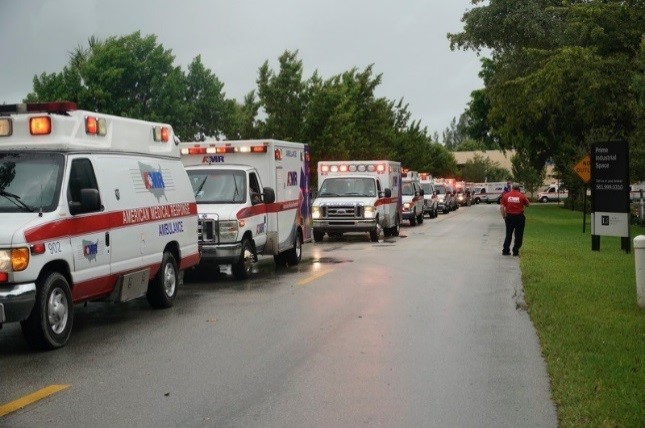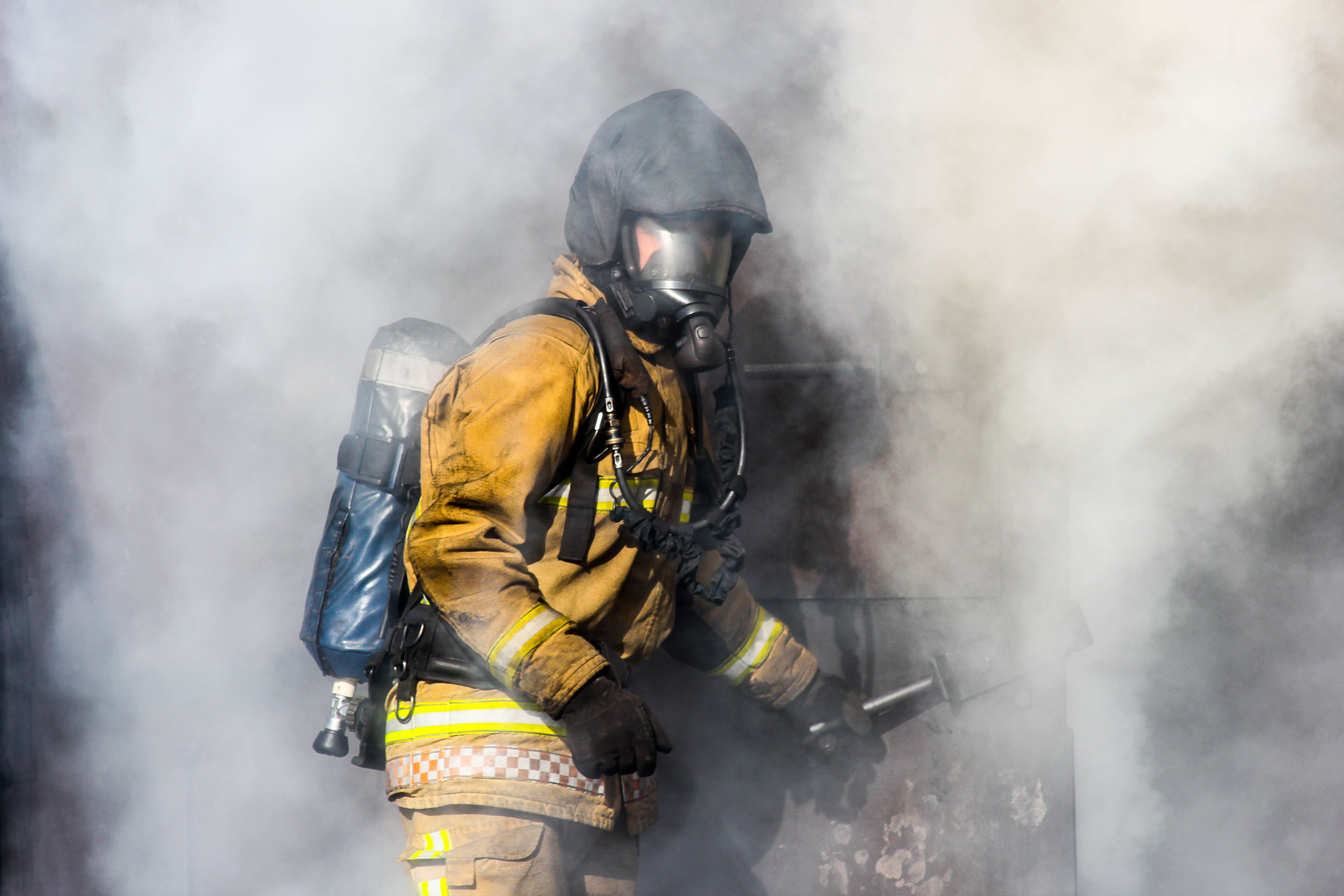|
Chief Ambulance Officer
Chief Ambulance Officer (CAO) is a senior manager in some ambulance services. In the United Kingdom, it is the traditional title held by the chief of an NHS ambulance service or a private ambulance service. In Ireland's HSE National Ambulance Service, it refers to one of several senior management roles. In the UK, the role is comparable to that of a Chief Constable within police forces or Chief Fire Officer within fire services. CAOs are the operational and administrative heads of the ambulance service and take command of all ambulance personnel at large operational incidents. They also set policy and targets (along with a board of directors) and are responsible for the day-to-day running of the service. The title of CAO is normally only used by medically qualified paramedic A paramedic is a registered healthcare professional who works autonomously across a range of health and care settings and may specialise in clinical practice, as well as in education, leadership, and ... [...More Info...] [...Related Items...] OR: [Wikipedia] [Google] [Baidu] |
Emergency Medical Services
Emergency medical services (EMS), also known as ambulance services or paramedic services, are emergency services that provide urgent pre-hospital treatment and stabilisation for serious illness and injuries and transport to definitive care. They may also be known as a first aid squad, FAST squad, emergency squad, ambulance squad, ambulance corps, life squad or by other initialisms such as EMAS or EMARS. In most places, the EMS can be summoned by members of the public (as well as medical facilities, other emergency services, businesses and authorities) via an emergency telephone number which puts them in contact with a control facility, which will then dispatch a suitable resource for the situation. Ambulances are the primary vehicles for delivering EMS, though some also use squad cars, motorcycles, aircraft, or boats. EMS agencies may also operate a non-emergency patient transport service, and some have rescue squads to provide technical rescue services. As a first resort ... [...More Info...] [...Related Items...] OR: [Wikipedia] [Google] [Baidu] |
Emergency Medical Services In The United Kingdom
Emergency medical services in the United Kingdom provide emergency care to people with acute illness or injury and are predominantly provided free at the point of use by the four National Health Services (NHS) of England, Scotland, Wales, and Northern Ireland. Emergency care including ambulance and emergency department treatment is only free to UK residents and a charge may be made to those not entitled to free NHS care. The NHS commissions most emergency medical services through the 14 NHS organisations with ambulance responsibility across the UK (11 in England, one each in the other three countries). As with other emergency services, the public normally access emergency medical services through one of the valid emergency telephone numbers (either 999 or 112). In addition to ambulance services provided by NHS organisations, there are also some private and volunteer emergency medical services arrangements in place in the UK, the use of private or volunteer ambulances at pub ... [...More Info...] [...Related Items...] OR: [Wikipedia] [Google] [Baidu] |
Health Service Executive (Ireland)
The Health Service Executive (HSE) ( ga, Feidhmeannacht na Seirbhíse Sláinte) is the publicly funded healthcare system in Ireland, responsible for the provision of health and personal social services. It came into operation on 1 January 2005. The current Director-General is Stephen Mulvany on an interim basis, after Paul Reid stepped down in October 2022. The new Director General, Bernard Gloster, will take up the role in Spring 2023. History The Executive was established by the Health Act 2004 and came into official operation on 1 January 2005. It replaced the ten regional Health Boards, the Eastern Regional Health Authority and a number of other different agencies and organisations. The Minister for Health retained overall responsibility for the Executive in Government. The HSE adopted a regional structure (HSE Dublin Mid-Leinster, HSE Dublin North East, HSE South and HSE West). A new grouping of hospitals was announced by the Irish Minister for Health, Dr. James Rei ... [...More Info...] [...Related Items...] OR: [Wikipedia] [Google] [Baidu] |
HSE National Ambulance Service
The National Ambulance Service ( ga, An tSeirbhís Náisiúnta Otharchairr) is the statutory public ambulance service in Ireland. The service is operated by the National Hospitals Office of the Health Service Executive, the Irish national healthcare authority. History The Health Act, 1970 allowed for the provision of an ambulance service by each of the eight health board (Ireland), health boards for their respective area. The health board ambulance services operated independently of each other, being funded from their board budget. In 1986, the National Ambulance Training School was established to provide training to ambulance staff on a national level, catering for the progression of pre-hospital care and the development of skills in the ambulance service as a whole. This was the first step towards nationalisation of the service, however it was not until 2005 with the establishment of the Health Service Executive (HSE) that the new National Ambulance Service was establis ... [...More Info...] [...Related Items...] OR: [Wikipedia] [Google] [Baidu] |
Law Enforcement In The United Kingdom
Law enforcement in the United Kingdom is organised separately in each of the legal systems of the United Kingdom: England and Wales, Northern Ireland and Scotland. Most law enforcement is carried out by police officers serving in regional police services (known as territorial police forces) within one of those jurisdictions. These regional services are complemented by UK-wide agencies, such as the National Crime Agency and the national specialist units of certain territorial police forces, such as the Specialist Operations directorate of the Metropolitan Police. Police officers are granted certain powers to enable them to execute their duties. Their primary duties are the protection of life and property, preservation of the peace, and prevention and detection of criminal offences. In the British model of policing, officers exercise their powers to police with the implicit consent of the public. "Policing by consent" is the phrase used to describe this. It expresses that the le ... [...More Info...] [...Related Items...] OR: [Wikipedia] [Google] [Baidu] |
Chief Fire Officer
Chief fire officer (CFO), formerly often just chief officer, is the highest rank in the fire and rescue services of the United Kingdom. There are currently 50 chief fire officers serving in the United Kingdom in charge of the local authority fire services. There is also a chief fire officer responsible for the Ministry of Defence Fire Services, which includes the Defence Fire and Rescue Service and the RAF Fire Service. Some UK airport fire services also designate their seniors officers as CFOs, though these officers rarely wear the same rank insignia as a local authority chief fire officer. Other titles for this office can include county fire officer and chief executive, neither of which are in common use. Greater Manchester Fire and Rescue Service does, however, use the title of county fire officer and chief executive'. Kent Fire and Rescue Service's chief executive is in charge of maintaining the service; however, they are not a trained firefighter and cannot carry out frontl ... [...More Info...] [...Related Items...] OR: [Wikipedia] [Google] [Baidu] |
Fire Services In The United Kingdom
The fire services in the United Kingdom operate under separate legislative and administrative arrangements in England and Wales, Northern Ireland, and Scotland. Emergency cover is provided by over fifty agencies. These are officially known as a fire and rescue service (FRS) which is the term used in modern legislation and by government departments. The older terms of ''fire brigade'' and ''fire service'' survive in informal usage and in the names of a few organisations. England and Wales (and formerly Scotland) have local fire services which are each overseen by a fire authority, which is made up of representatives of local governments. Fire authorities have the power to raise a Council Tax levy for funding, with the remainder coming from the government. Scotland and Northern Ireland have centralised fire services, and so their authorities are effectively committees of the devolved parliaments. The total budget for fire services in 2014-15 was £2.9 billion. Central government m ... [...More Info...] [...Related Items...] OR: [Wikipedia] [Google] [Baidu] |
Paramedic
A paramedic is a registered healthcare professional who works autonomously across a range of health and care settings and may specialise in clinical practice, as well as in education, leadership, and research. Not all ambulance personnel are paramedics. In some English-speaking countries, there is an official distinction between paramedics and emergency medical technicians (or emergency care assistants), in which paramedics have additional educational requirements and scope of practice. Duties and functions The paramedic role is closely related to other healthcare positions, especially the emergency medical technician, with paramedics often being at a higher grade with more responsibility and autonomy following substantially greater education and training. The primary role of a paramedic is to stabilize people with life-threatening injuries and transport these patients to a higher level of care (typically an emergency department). Due to the nature of their job, paramedics work ... [...More Info...] [...Related Items...] OR: [Wikipedia] [Google] [Baidu] |
Chief Executive
A chief executive officer (CEO), also known as a central executive officer (CEO), chief administrator officer (CAO) or just chief executive (CE), is one of a number of corporate executives charged with the management of an organization especially an independent legal entity such as a company or nonprofit institution. CEOs find roles in a range of organizations, including public and private corporations, non-profit organizations and even some government organizations (notably state-owned enterprises). The CEO of a corporation or company typically reports to the board of directors and is charged with maximizing the value of the business, which may include maximizing the share price, market share, revenues or another element. In the non-profit and government sector, CEOs typically aim at achieving outcomes related to the organization's mission, usually provided by legislation. CEOs are also frequently assigned the role of main manager of the organization and the highest-ranking o ... [...More Info...] [...Related Items...] OR: [Wikipedia] [Google] [Baidu] |



